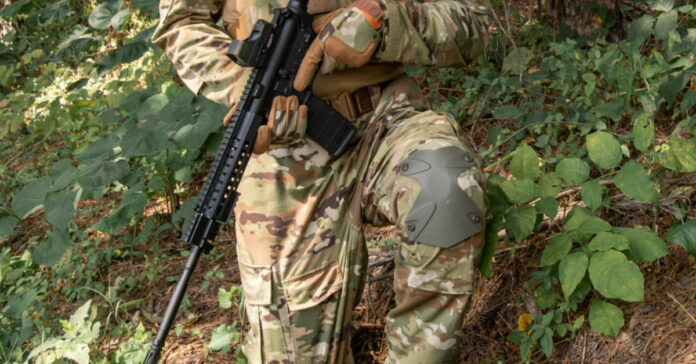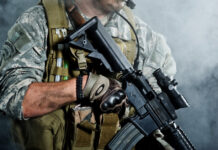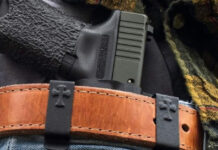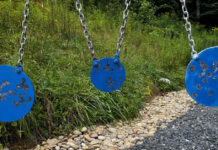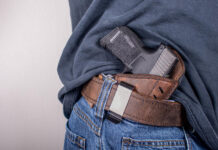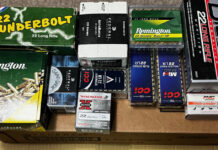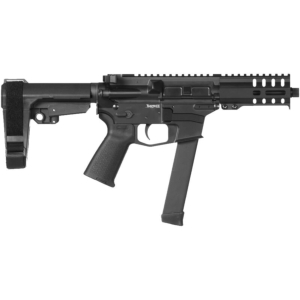On Friday, the bureau of Alcohol, Tobacco, and Firearms (BATFE or just ATF) met with the National Shooting Sports Foundation (NSSF) and multiple gun manufacturers to discuss ghost guns. (EDIT: See our note at the end of the article.)
For those of you wondering how a gun comes back from the dead to become a ghost, let me disabuse you of that notion. The term “Ghost Gun” refers to a gun without a serial number, usually made at someone’s home. These days, many ghost guns are made using something called an “80 percent receiver.” In other words, a hunk of metal that looks like a gun part is sold to a hobbyist who uses either a mill or a drill press to finish the hunk of metal into the receiver for a gun
Once the metal is milled, drilled out, or filed into a finished receiver (not an easy task), the home builder must acquire and fit all the other parts to the gun, like a barrel, trigger, stock, etc. Because there are lots of manufacturers selling repair and replacement parts for popular firearm platforms—like the AR-15, the Glock 17/19, and the 1911—home builders can source the other parts and turn their fished receiver into a gun. Because these guns don’t have serial numbers, they are called “ghost guns.”
While 80 percent receivers appear to be the gun grabber’s biggest concern, anyone with a decent 3D printer can also make a ghost gun. There are also molds into which you make a plastic receiver in just hours.
No Serial Numbers–So What?
This practice of making your own gun is completely legal. In fact, if you can own a gun, you have the legal right to build a gun from scratch. What you don’t have the legal right to do is to sell the finished gun without getting a license from the ATF.
A serial number does not make a gun more dangerous or more deadly, it just makes it harder to trace. But many guns used in crimes are already impossible to trace because they were stolen. When the police recover a stolen gun at a crime scene and trace it back to the original owner, they often fid the owner reported the theft months ago.
Guns are popular targets for burglars who break into unoccupied homes because they are small, portable, and fast sellers.
Criminals who want to commit a crime using a gun without a serial number don’t have to build one. They can buy a gun and remove the serial number from it using a grinder or another tool. Serial numbers are usually stamped in the metal, so all they have to do is grind the metal down far enough that the serial number cannot be read. People who steal cars change the Vehicle Identification Number; erasing the serial number on a gun is not much harder. That’s far easier than making a gun from scratch, even with a parts kit.
There are also plenty of old guns floating around without serial numbers. Guns made or imported before 1968 were not required to have a serial number.
Criminals and Guns
People who and use guns in crimes are, by definition, criminals. Criminals are prohibited from owning guns, but that doesn’t seem to stop them. Likewise, penalties for using guns in the commission of a crime don’t seem to slow down the raising murder rate. All those drive-by shootings, gang shootings, and other gun violence in places like Chicago use guns that were not purchased legally by the shooter.
Does it really matter to the criminal or the victim if the gun was stolen or made in someone’s basement? The point is, criminals commit crimes using guns, mostly illegal guns. Maybe some are using ghost guns, but if they didn’t. they would just get their guns from another source.
Guns are also imported illegally by criminals. Here’s an episode of the TV show Underworld on Ghost Guns. Watch just the first half and you will see that the ghost guns in this show are made overseas, not in hobbyist’s basements:
Prohibition Always Fails
The country’s experience with prohibition is an example of what happens when you take something a large swath of the population owns and enjoys and try to ban or limit it. By criminalizing a common behavior, enjoying a drink or two, the government turned millions of residents into criminals.
By prohibiting the manufacture, transportation, and sale of intoxicating liquors, the government inadvertently created an industry of illegal distiller, smuggler, and speakeasies. This lead to a rise in crime and the growth of the organized crime.
Prohibition was such a failure that they repealed it just 15 years later.
When they started the “war on drugs,” the result was similar: increased violence as cartels and gangs fought for the money it generated, a greater availability of drugs, less control over drugs, and heavily armed police forces.
Banning ghost guns, or banning any specific gun or all guns for that matter, is doomed to failure and will accomplish little or nothing. Criminals will still commit crimes. Drug dealers will still deal drugs and shoot their competition. Killers will still kill, and mass murders will simply drive buses and truck into crowds, use explosive-packed trucks or RVs, or find other methods to kill if they cannot find a gun.
NOTE:
After we wrote this article, which in its opening paragraph says the meeting was about ghost guns, a “fact” we got from the Wall Street Journal, we read a post published by Ammoland.com that reported on the meeting. The Ammoland article, which was written after the meeting, stated that the purpose of the meeting was to get industry input on how to better define what part of a gun is a receiver and to consider changing the part or parts of a firearm that are serialized. Little or no other information has been released from the meeting, so we do not know if ghost guns were in fact a topic as well. We’ve decided to let this article stand for two reasons: First, because the points we make about ghost guns are still valid; and, two, because ghost guns remain a target of gun grabbers.

